Mandu Fort Madhya Pradesh : Mandu Fort is located in the Mandwa region in the Dhar district of Madhya Pradesh. Mandu Fort is a major historical attraction of Madhya Pradesh. Mandu Fort, established by the Panwar kings, symbolizes its glorious history and the love story of Queen Roopmati and Baz Bahadur. From time to time, Mandu has been under the control of different kings and princely states. In this article you can know the history of Mandu Fort and important things related to it.
मांडू का किला | Mandu ka Kila Hindi
History of Mandu City
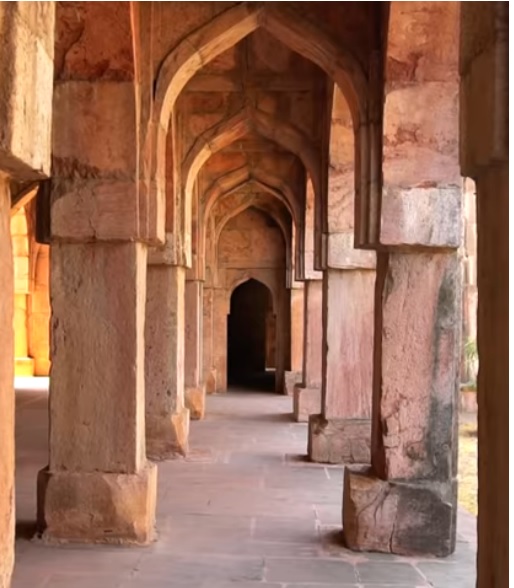
Mandu has been a historical city. Mandu, situated in the Vindhyachal hills, is at an altitude of about 2000 feet above sea level. Kings of Parmar or Panwar dynasty established this city. Among the kings of Parmar dynasty, the names of Raja Harsh, Raja Munj and Raja Bhoj are famous. During the time of Panwar dynasty, Mandu was known as Mandapa Fort. The name Mandu is named after Maharishi Mandaljay. In history, Mandu was also known as Mandava.
During the rule of Panwar dynasty, Dhar city, located about 35 kilometers from Mandu, was made the capital. At that time, due to attacks by external invaders, he changed his capital from Dhar to Mandu several times. Due to Mandu city being at a height, there was a problem of water here and that is why he used to change the water from his capital Mandu. King Jayavarman first made Mandu his capital because Dhar was under attack from Malwa. He shifted his capital from Dhar to Mandu and he used to change the capital as per his time, security and situation.
The region came under Muslim rulers in the 13th century. The then ruler Dilawar Khan had changed the name of Mandu to Saadiabad. Saadiabad means “city of happiness”
After this, many regimes kept changing here. Later the Mughals also ruled here. This journey continued from Bahadur Shah of Gujarat to Baz Bahadur Shah. Mandu city became independent from Tughlaqs and came under Malwa, after which Mohammad Shah and later Mughals and after Mughals, Maratha rulers ruled there for a long time.
History of Mandu Fort
Mandu Fort used to be an important military post due to its strategic location and natural security. Vindhyachal hills on one side and Narmada river on the other side provided it natural protection. First Raja Bhoj made his capital at Ujjain city and later at Dhar. Raja Bhoj considered Mandu as a safe place and established it as a fort. Mandu region is very famous for its amazing fort. The beauty of this fort and its artefacts are worth seeing and attract the attention of a large number of tourists.
The circumference of Mandu Fort is approximately 82 kilometers and 40 monuments have been built inside it. Mandu Fort is also considered to be the largest fort of India. Most of the monuments of Mandu Fort were built between 1401 and 1526 AD. At that time new buildings were constructed here. 125 years are called the golden period of that time, later Muslim Sultan Dilawar Khan Gauri and his son Hoshang Shah ruled here and also constructed many buildings.
After this, many regimes kept changing here. Later the Mughals also ruled here. This journey continued from Bahadur Shah of Gujarat to Baz Bahadur Shah. The city of Mandu became independent from the Tughlaqs and came under Malwa, after which Mohammed Shah and later the Mughals and after the Mughals, the Maratha rulers ruled there for a long time.
Main Attraction of Mandu Fort
Mandu fort can be understood in three main groups, the first of which is the royal group, the second is the central group and the third is Rewa Kund. Jahaz Mahal and Hindola Mahal come under the royal group. Both these palaces are famous for their unique craftsmanship.
Gates – Mandu Fort
There are a total of 12 doors to enter Mandu, out of which the main doors are Alamgir Darwaja, Tarapur Darwaja, Kamani Darwaja and Delhi Darwaja. Apart from these, other doors like Ramgopal Darwaza are also important but among all these, Delhi Darwaza is prominent.
Jahaz Mahal : Mandu Fort
Jahaz Mahal is a famous attraction here. This palace was built by the rulers of the Khilji dynasty. This palace is built between two ponds, Kapoor Pond and Munj Pond, which looks like a water ship and that is why this palace is called Jahaaz Mahal.
Hindola Mahal : Mandu Fort
The famous Hindola Mahal of Mandu is made of slanting walls which are inclined at 77 degrees. Hindola means swing. Due to the slanting walls, this palace looks like a swing and that is why it is called Hindola Mahal. This palace does not even have a roof and when queens used to swing here, this palace was temporarily covered. This palace was built by Hoshangshah and was known as the main court at that time.
Hindola Mahal is spread over a complex of 4 kilometers which requires about 2 hours to visit. Hindola Mahal is a wonderful example of Malwa style of architecture. The central group includes the Tomb of Hoshangshah, Jami Masjid, and Ashrafi Mahal.
Hoshangshah Maqbara : Mandu Fort
Hoshangshah was the son of Dilawar Khan, the Ghori ruler of Malwa. This Marvel-built mausoleum became the inspiration for Shahjahan’s Taj Mahal. It is said that before the construction of Taj Mahal, Shahjahan had sent his craftsmen to different places to know the intricacies of construction of different buildings. During that time, that craftsman also came to Mandu and studied the tomb of Hoshangshah here.
Jami Masjid : Mandu Fort
It is surprising to see the vastness of Jami Masjid located in the Mandu Fort. This is a mosque in which evidence of Hindu architecture is found. Inside the mosque there is a large courtyard, many pillars and huge entrance gates. The beauty of this monument inspires tourists to stop here. The premises surrounding the Jami Masjid are painted with Hindu artwork. Here, pictures of elephants are shown in the artwork of the pillars. There is also a provision of accommodation for the people near Jami Masjid for which a Dharamshala has also been built there.
Asharfi Mahal : Mandu Fort
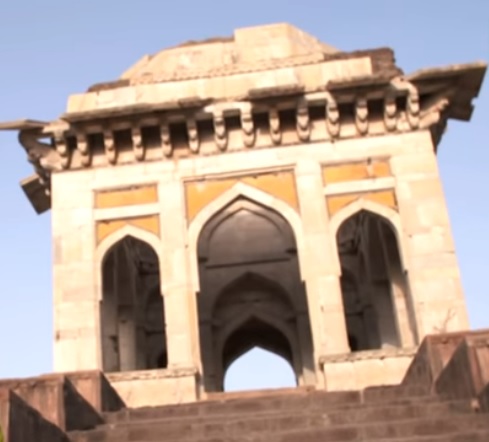
Ashrafi Mahal has been a madrasa located in Mandu where children used to come to study. An interesting story is told behind the name of this palace. It is said that Ghiyasuddin Khilji of the Khilji dynasty advised his queens to climb this palace directly to maintain their health and promised that he would give them one ashrafi for each step they climbed. Perhaps that is why this palace was called Ashrafi Mahal.
Rewa Kund, about 5 kilometers from the main group, testifies to the love of Baz Bahadur Shah and Queen Roopmati.
Rani Roopmati Mahal : Mandu Fort
Malwa ruler Baz Bahadur built this beautiful palace for his queen Roopmati. Rani Roopmati was a Hindu girl who used to take her meal every morning only after seeing the Narmada River. Due to this habit of Queen Roopmati, Baz Bahadur built this palace at a height so that she could see the Narmada river from here every day.
The story of Baz Bahadur and Rani Roopmati is very famous here. Rani Roopmati, as per her name, had immense qualities. She was a very beautiful woman. Apart from being beautiful, Roopmati was also skilled in the art of singing. Queen Roopmati was dancing and singing in the village with her friends, when the eagle Bahadur Shah came out for hunting and he heard the sweet song of Roopmati. Baz Bahadur Shah was fond of music. He saw Roopmati and got impressed by her and proposed marriage and requested her to go to Mandu. At that time Roopmati placed a condition that she would never change her religion. Baz Bahadur Shah agreed to this and their marriage was solemnized as per both Hindu and Muslim customs.
Roopmati had to visit the Narmada River every day and worship it. That is why Rani Roopmati’s palace was built on a high hill so that in the morning Rani Roopmati could pray and have darshan of the Narmada River from there. Gradually, discussions about Rani Roopmati’s beauty and her art started spreading everywhere. On the other hand, Akbar was gradually expanding his empire. Then he attacked Mandu in 1761. Baz Bahadur’s army was defeated in this war and Baz Bahadur Shah died in the attack. Now instead of accepting Akbar’s story, Queen Roopmati decided to end her life and committed suicide by consuming poison. In this way, the love story of Rani Roopmati and Baj Baj Bahadur Shah had a sad end but even today their love story is being testified in this historical palace standing in Madu.
The main other attractions of Mandu Fort which attract tourists include the gates of the fort which fall within a radius of 45 kilometers, the ruins of many palaces, decorative canals and bathing halls are still found inside the Mandu Fort.
Shri Mandavgarh Teerth
Shri Mandavgarh Tirtha is a Jain temple which is a place of religious importance for the followers. Shri Mandavgarh Tirtha is a temple dedicated to Lord Suparshvanath, the seventh Tirthankara of Jainism. After spreading the teachings of Jainism during his lifetime, he attained Nirvana at Sammed Shikhar Ji.
It is not possible to see Mandu completely in a single day, one’s feet get sore while walking there, but the desire to see the palace never ends within a person. There is a whole world inside this fort.
Best time to visit Mandu
The best time to visit Mandu Fort is from October to March. During the summer season, it is not possible to see the fort completely due to the intense sunlight.
How to reach Mandu Fort
If you are traveling by flight to reach Mandu, then Ahilya Bai Holkar Airport located in Indore is the nearest. The distance from Indore to Mandu is approximately 90 kilometers which can be covered by road, bus or taxi.
If you are traveling by train to reach Mandu Fort, then you can travel from Dhar Railway Station to Mandu by bus or taxi or by renting a car.
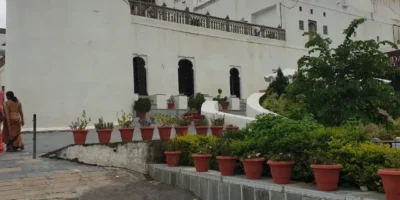
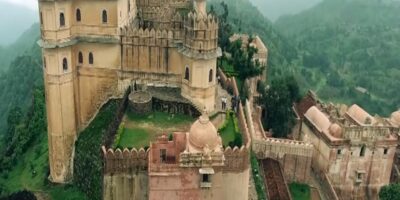
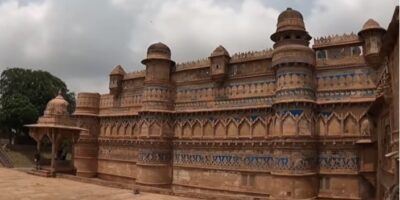
Leave a Reply